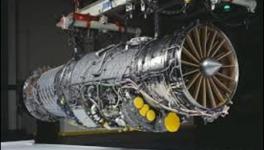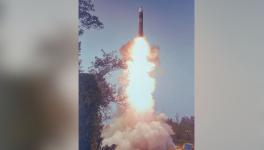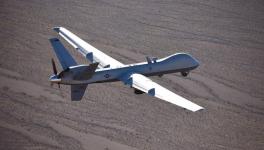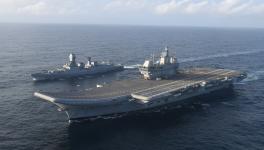Indian Navy’s Indigenisation Push Gets Boost with AIP System for Submarines
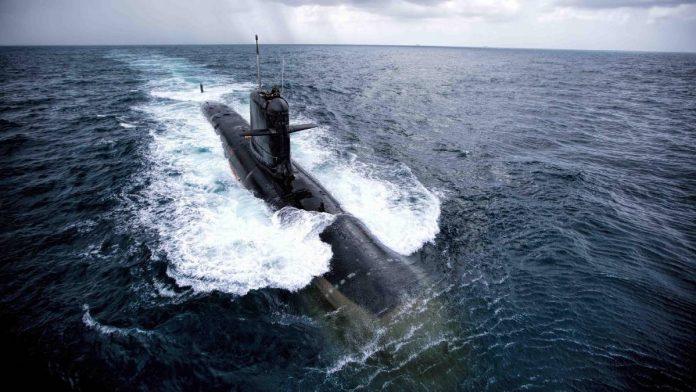
Image Courtesy: Twitter
An innovative Air Independent Propulsion (AIP) system developed indigenously by the Defence Research & Development Organization (DRDO) in collaboration with a consortium of several private and public sector companies led by Larsen & Toubro (L&T) – the Lead System Integrator – passed a crucial test of its land-based prototype on March 8. The AIP power plant tests involved both, endurance mode – operation at low power for extended periods over 14 days – and maximum power mode over two days as required by the Indian Navy.
The 270kW Land-Based Prototype (LBP) was developed by DRDO’s Naval Materials Research Laboratory (NMRL) at Ambernath, about 50 kms from Mumbai. It came up under a project sanctioned in 2010 for Rs 191.6 crores at a marginal cost overrun of Rs 210 crores and is scheduled to close in June this year. Next, a Marinised Engineered AIP Energy Module (MAREEM), a pre-production version of an on-board AIP system, will be designed and installed on a test-bed submarine mock-up for a series of trials after which the production version would be developed and manufactured by industry partners for fitment on operational submarines. This AIP is designed as a modular unit that can be fitted into special hull sections in submarines, or even in other applications.
Under the once-classified Project 75(I), India is soon to manufacture six stealth diesel-electric submarines with Transfer of Technology (ToT) in collaboration with any one of five short-listed original equipment manufacturers from Russia, France, Germany, Spain and South Korea. These subs will be fitted with the indigenous AIP systems. Also, the production of six Scorpene class diesel-electric submarines is already underway under Project 75 at the public sector Mazagon Docks Shipbuilders Limited (MDL) under transfer of technology (ToT) from Naval Group of France, interestingly, also a PSU. Four of these have either already been delivered to the Navy or are nearing delivery, and it is expected that the last two Kalvari-class submarines would be with the DRDO AIP starting in 2023, while the earlier ones may also be retro-fitted with AIPs subsequently.
Significance of AIP
As the name suggests, AIP systems enable submarines to stay underwater for long periods of up to three weeks at low cruise speeds, without having to surface or snorkel (staying just below the surface while extending a pipe up to inhale air required for the engine) at least every four days as is the case with diesel-electric submarines. Nuclear-powered submarines are able to stay underwater for an enormous length of time, often between 80 to 90 days or more for the larger subs, without having to surface, and excel at deep-water long-duration missions, even though their mechanical pumps that circulate much-needed coolant do make at least some noise. Nuclear power plants are of course extremely powerful and make oxygen, circulate air etc inside the sub. Modern diesel-electric subs too use lead-acid or Lithium-ion batteries while underwater, and are extremely silent for short periods, but must carry oxygen or air, and must surface frequently to run their engines to recharge the batteries, exposing themselves often to opposing forces. Subs with AIP, however, can stay underwater for much longer, since they carry power systems that do not require external air or oxygen. As such, they are deadly in near-coastal scenarios against land-based targets or other conventional submarines.
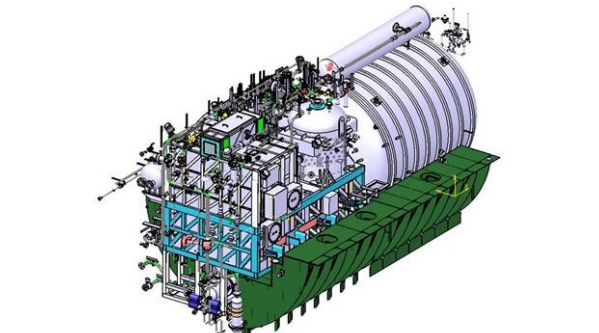
AIP power systems are therefore a hallmark of advanced submarine technology, currently possessed only by Russia, China, France, Germany, Sweden and Spain. Of these, China has supplied AIP systems for Pakistan Navy subs, while the other countries are major players in the international military equipment market for submarines.
India acquiring this capability indigenously is a significant development, since AIP systems are very expensive to import, and is a huge leap forward towards technological self-reliance in submarine technologies after having developed India’s own nuclear-powered submarine. It is also one more feather in the cap of DRDO, with accolades multiplying in recent times since several indigenous technology development projects are fructifying after a decade or more of arduous R&D work.
Fuel Cells
As noted, AIP systems enhance the silent and low-detection capability of submarines by substantially reducing the interval between surfacing or snorkeling and fully submerged operations, called the “indiscretion ratio”. This ability is enhanced even more by the use of fuel cells, which produce their own energy as long as fuel is supplied, and thus eliminate the need for conventional batteries that require recharging.
Fuel cells are electro-chemical devices that convert the chemical energy of a fuel (usually hydrogen), in combination with an oxidising agent (usually oxygen) mediated by an electrolyte, into electricity, through chemical reactions. When hydrogen and oxygen are used the only by-products are water and heat. For a future carbon-free world, hydrogen-based fuel cells are considered among the most promising non-polluting energy sources for use in a variety of applications such as automobiles and aircraft, where using solar power may be difficult. Like batteries, fuel cells can be added together in multiple units called a stack.
In submarine-based AIPs, the space limitation of having to carry oxygen and hydrogen is a major problem. The DRDO/NMRL AIP system has tackled this problem by producing hydrogen on board during operations. In this AIP, hydrogen is made from stored Sodium borohydride powder and stored oxygen with phosphoric acid as electrolyte, a so-called phosphoric acid fuel cell (PAFC). This makes the DRDO AIP one of the most advanced such systems currently in operation. While this method is not unique in the world, developing this technology indigenously is a major achievement by NMRL/DRDO, which will also have many other military as well as civilian applications down the line.
Sailing towards Self-Reliance
India’s rapidly declining submarine fleet has been a matter of serious concern, that too at a time when the security environment on both flanks is seen to have deteriorated substantially, and when the Navy has projected security interests ranging from the Horn of Africa in the west to the Malacca Straits and beyond in the east. India’s efforts at procurement from abroad have witnessed inordinate delays due to its notoriously shambolic procurement system, a bureaucracy bound up in red tape, and interference by vested interests. Even the P75I project underwent considerable delays due to persistent efforts by certain big corporate entities to enlist themselves among other serious bidders, despite one being beset with serious financial and managerial issues and the other having no experience at all in ship-building.
The Indian Navy had embarked on a determined process of transitioning from a ship-buying force to a ship-building one by 2030. This goal, albeit delayed, is nearing fruition, with most recent vessels built in Indian shipyards.
Submarines posed serious challenges in terms of both technology and manufacturing capability. Having succeeded in developing and making the indigenous Arihant nuclear-powered submarine, and with the Project 75 Scorpene subs and Project75I subs with AIP, the Indian Navy is close to the final stages of this journey towards indigenisation. It is believed that Project 75I involving ToT from a foreign OEM may well be the last ToT project for submarines, after which India would have established the full ecosystem for indigenous design and manufacture of different types of submarines.
The major role of L&T as system integrator in the AIP project, earlier in the construction of the Arihant nuclear sub and several other naval vessels, and as a potential bidder for the P75I project, are also noteworthy. L&T is emerging as a rare – emphasis on rare – example of a home-grown defence major in the private sector not dependent on imported technologies and willing to undertake the hard slog of indigenous development.
D. Raghunandan is a senior journalist. The views are personal.
Get the latest reports & analysis with people's perspective on Protests, movements & deep analytical videos, discussions of the current affairs in your Telegram app. Subscribe to NewsClick's Telegram channel & get Real-Time updates on stories, as they get published on our website.










